Are you looking to navigate the intricate world of diplomatic correspondence? Understanding how to craft a formal letter to an embassy can often feel daunting, but it doesn't have to be! Whether it's for requesting a visa, seeking information, or formalizing diplomatic relations, the structure and tone are crucial. Dive into our guide for tips and templates that will make your next diplomatic note clear and effectiveâread on to unlock the secrets of impeccable embassy communication!
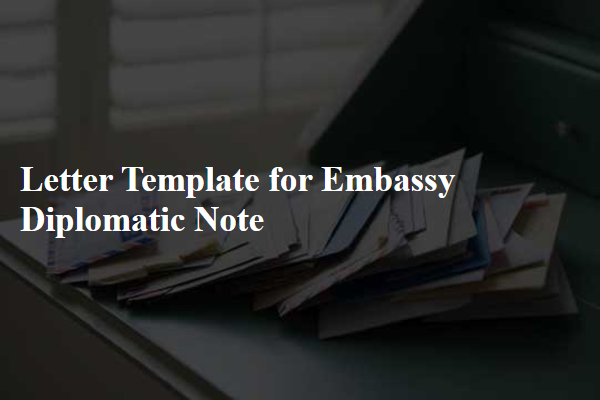
Diplomatic Salutation
Diplomatic communications often require specific formalities to ensure respect and clarity. A diplomatic salutation typically includes the recipient's title, name, and country-specific honorifics. For example, addressing an ambassador might begin with "His Excellency" followed by their name and the title of the diplomatic mission, such as "Ambassador of the [Country] to [Host Country]." Some embassies also prefer to include the specific designation, such as "the Honorable," to emphasize the respectful nature of the correspondence. Such formalized greetings ensure adherence to the customs and practices prevalent in international relations, reinforcing the tone of diplomacy.
Reference Number and Subject Line
Creating a diplomatic note for an embassy involves precise wording and a formal structure, emphasizing clarity and respect. Each diplomatic note should typically include a reference number and a subject line that clearly states the purpose of the communication. The reference number aids in tracking and organizing correspondence, while the subject line summarizes the note's content, enabling quick comprehension by the recipient. Reference Number: 2023/ABC/001 Subject Line: Request for Visa Issuance for Cultural Exchange Program Participants
Opening Paragraph
Embassy diplomatic notes serve as formal communications between government entities, often addressing significant matters such as international relations or bilateral agreements. These notes are typically initiated with an opening paragraph that clearly states the purpose of the correspondence. For instance, an embassy might convey a request for a meeting regarding economic cooperation, emphasizing the importance of collaborative efforts to enhance trade relations between the two nations. The diplomatic note should include reference numbers for tracking, the date of issuance, and the names of specific officials involved in the discussion to lend clear context and formality to the communication.
Purpose and Context
A diplomatic note serves as a formal communication from one government to another, typically addressing issues of mutual interest or concern between nations. Such notes can be utilized to discuss various topics, including trade agreements, consular matters, or political developments. Examples include the Vienna Convention on Diplomatic Relations, which outlines the framework for diplomatic interactions and the protocol regulations governing these exchanges. The context of a diplomatic note can vary widely, depending on specific events, such as bilateral meetings, international summits, or incidents affecting foreign relations. Each note must adhere to established diplomatic etiquette and protocols to ensure respectful and effective communication between the involved countries, often necessitating careful consideration of language and tone.
Closing and Signature
Embassy diplomatic notes typically conclude with formal closing remarks that express respect and readiness for continued communication. In many instances, the closing remark may include phrases that reinforce friendly relations between the parties involved. Following this, the note would include the signature of the diplomat or official. Typical signatories may include titles such as Ambassador, Charge d'Affaires, or Consul General, as well as the name of the official to lend personal accountability. The date and location of signing may also be indicated underneath the signature for chronological clarity, often reflecting the diplomatic practice of transparency in communications.

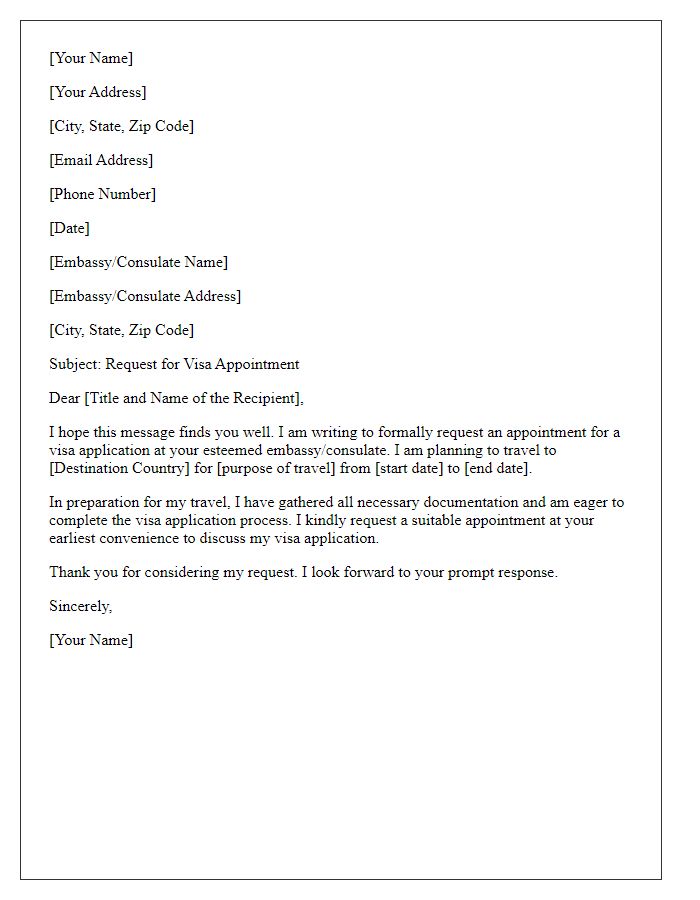
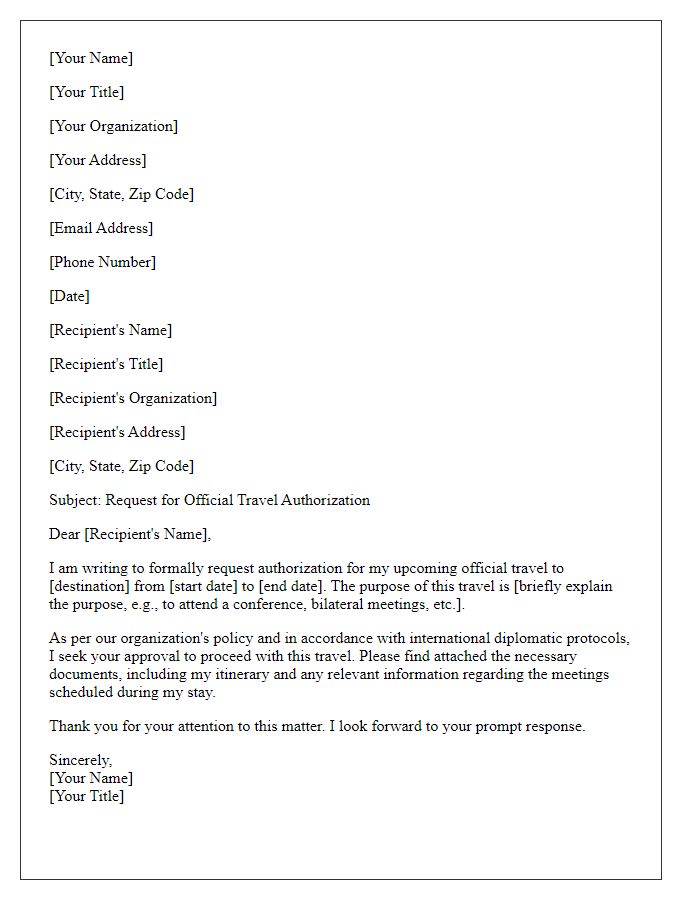
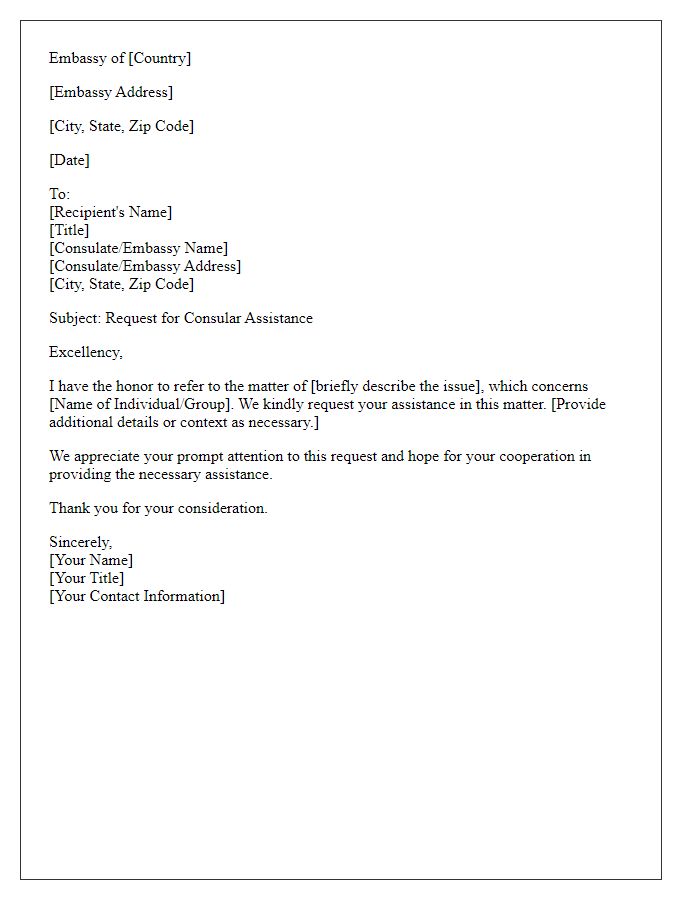


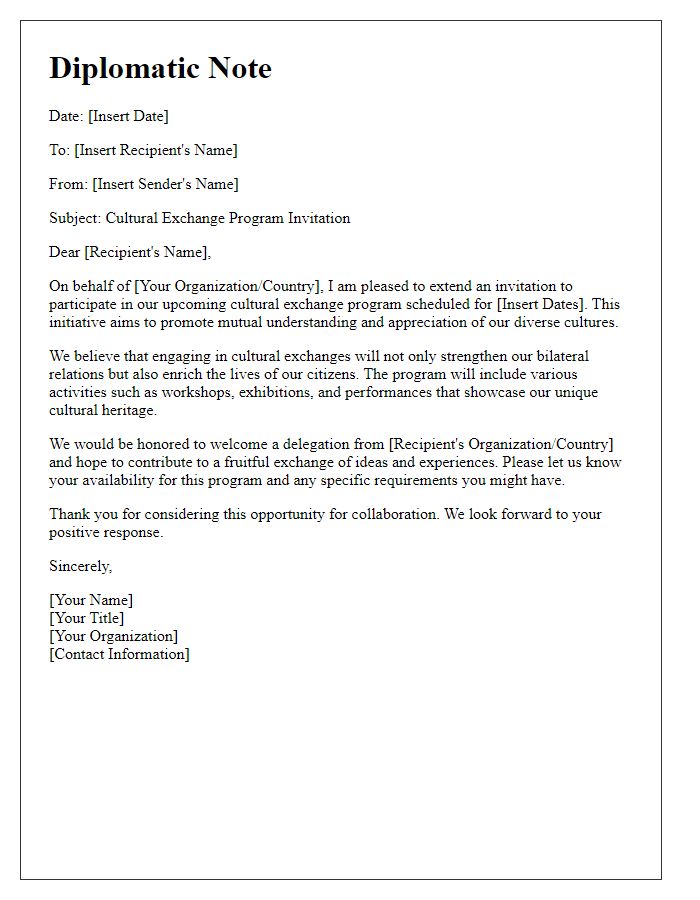
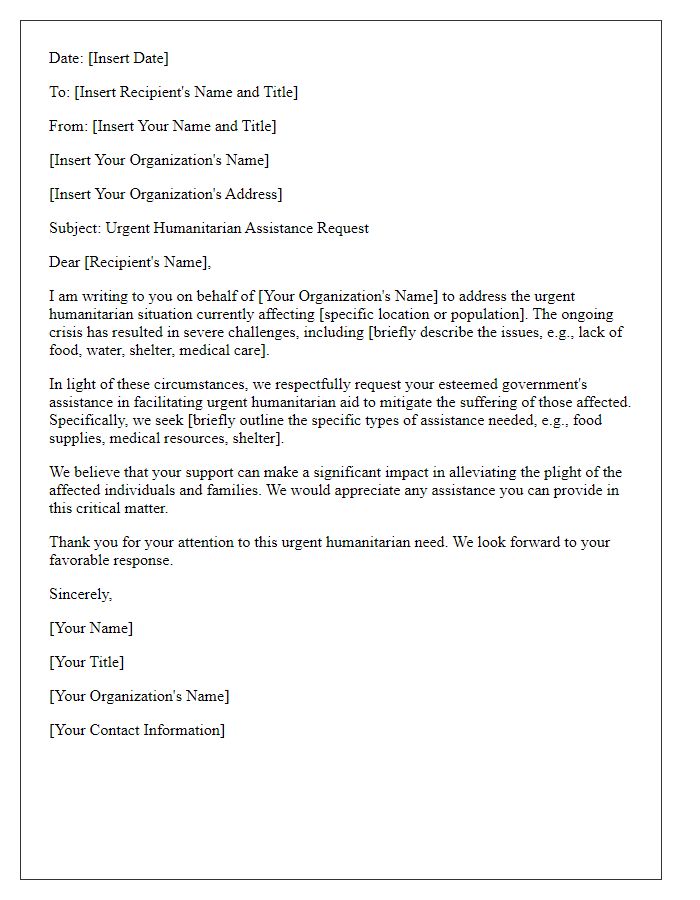
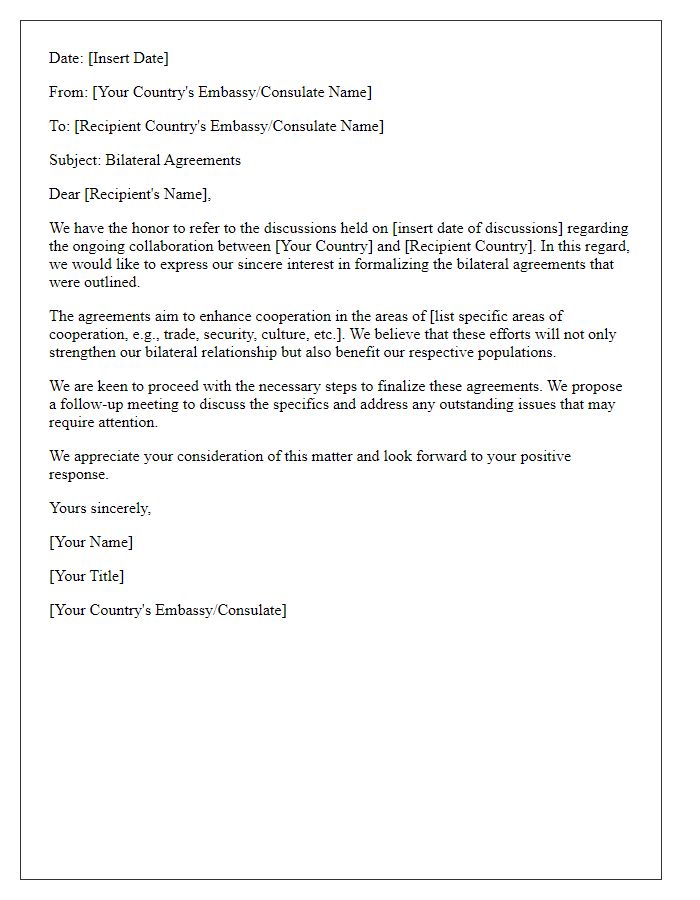
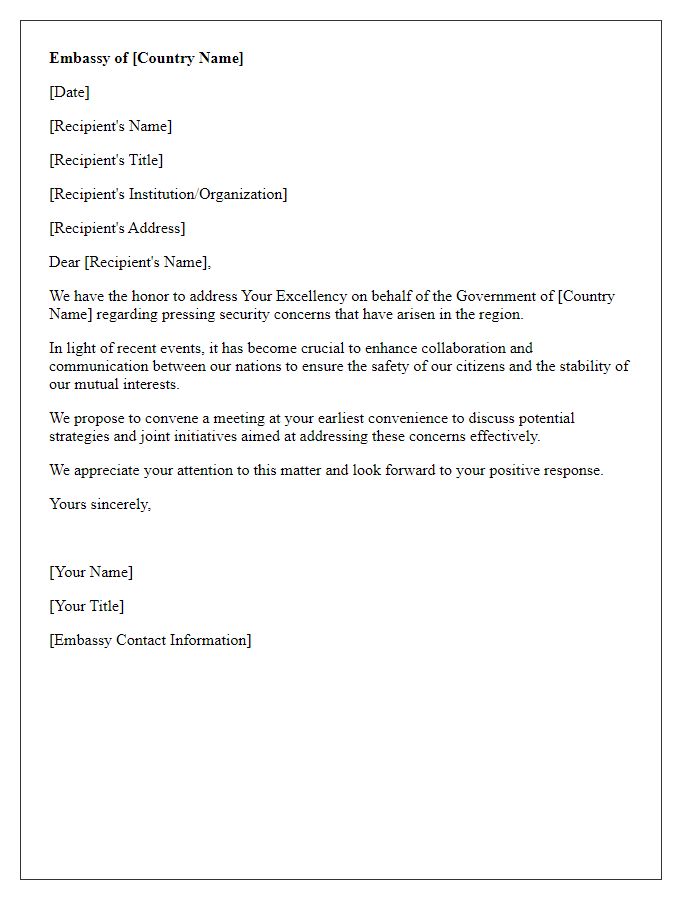
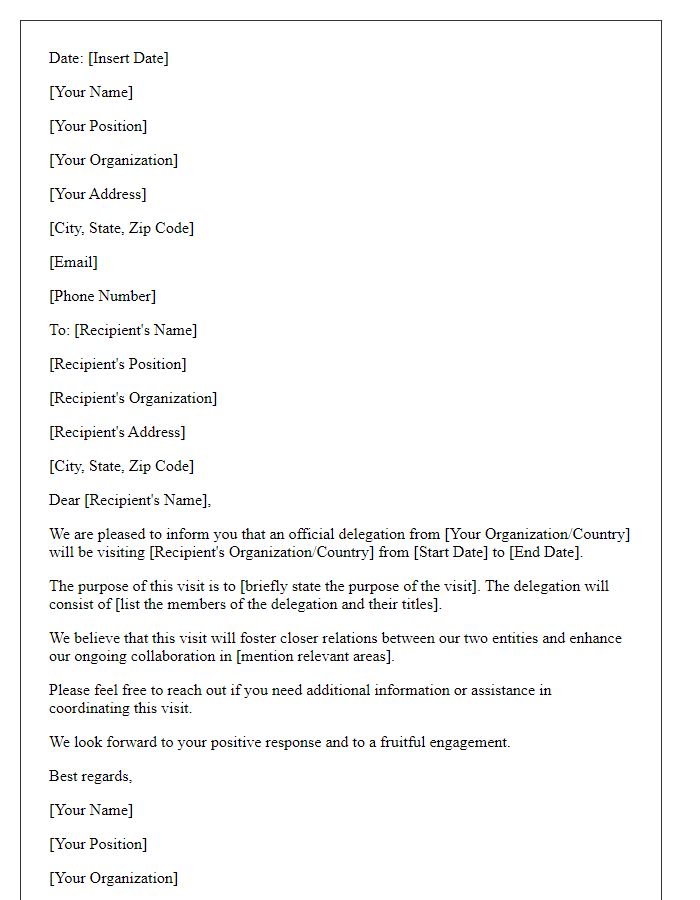

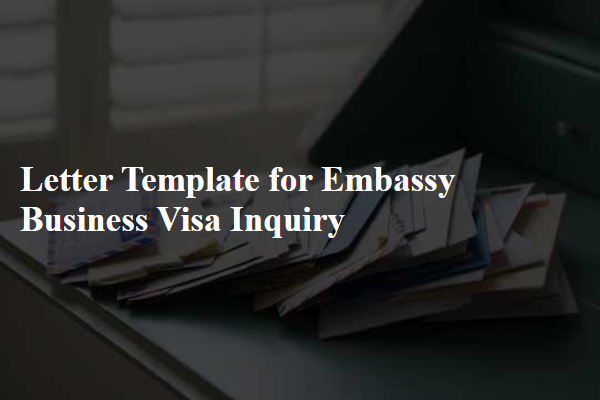
Comments